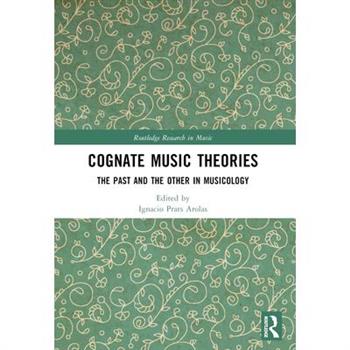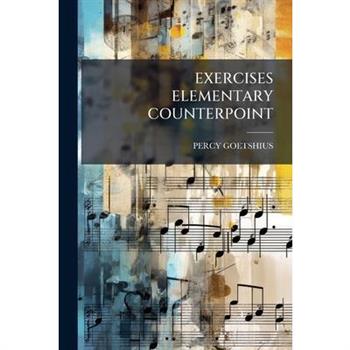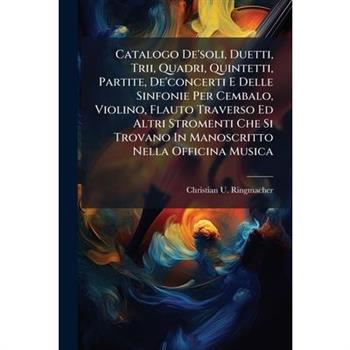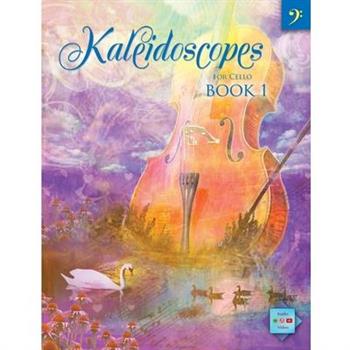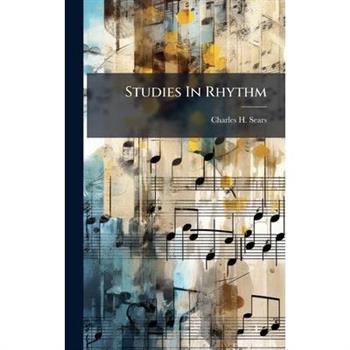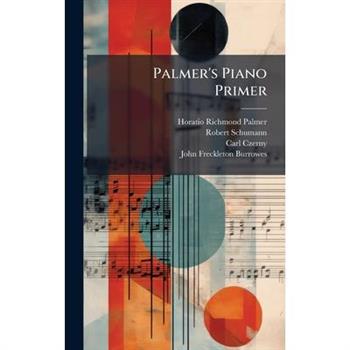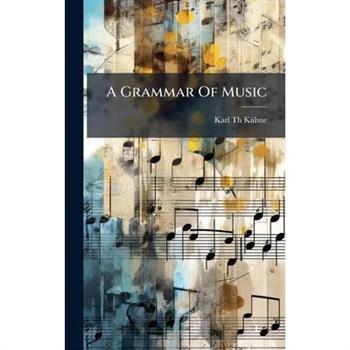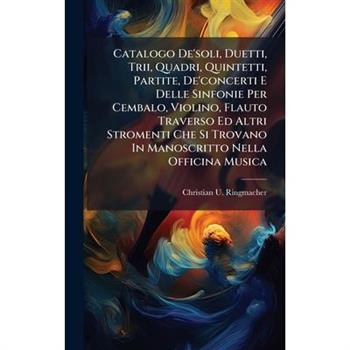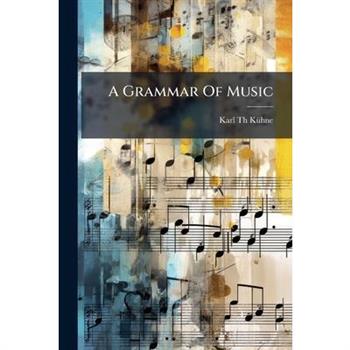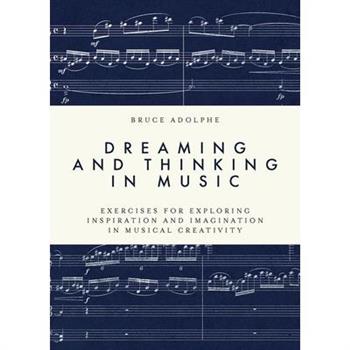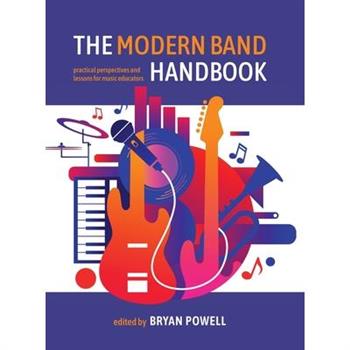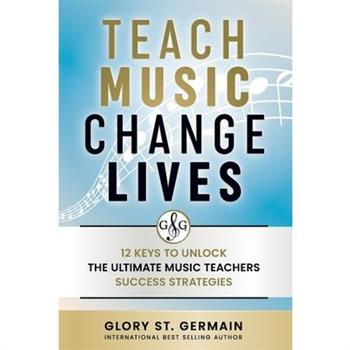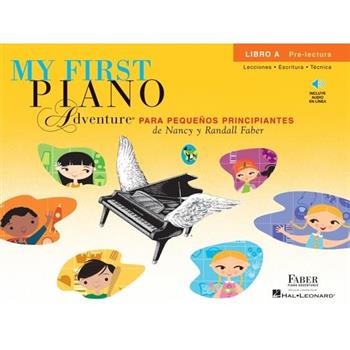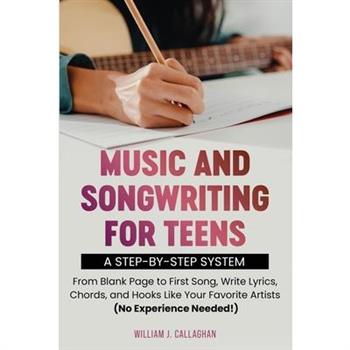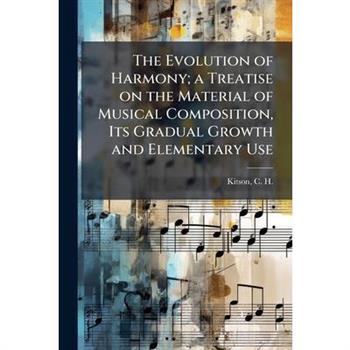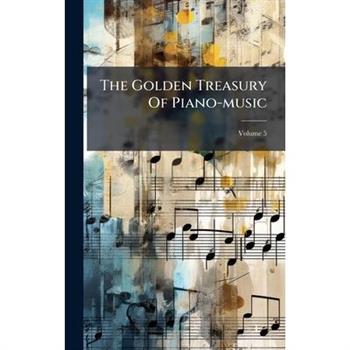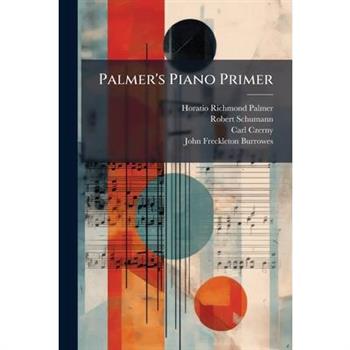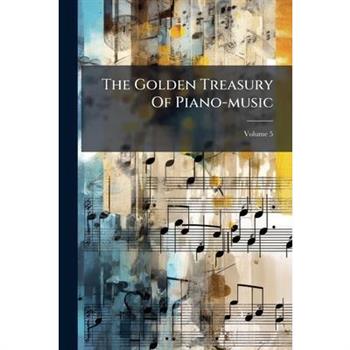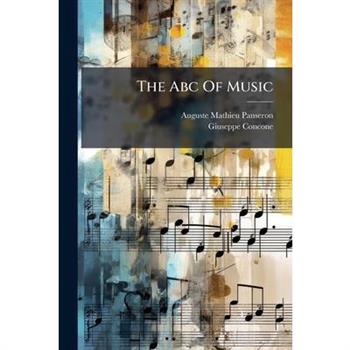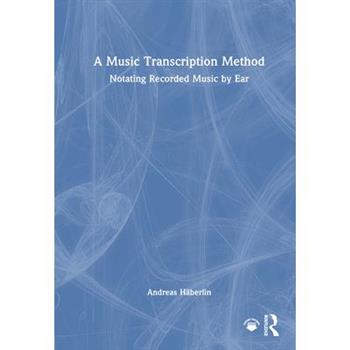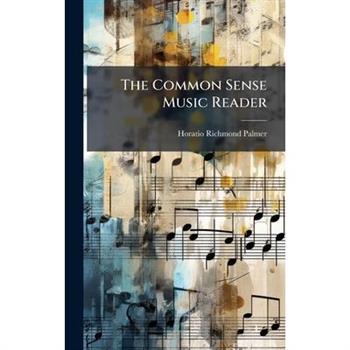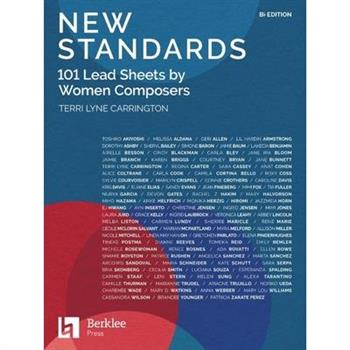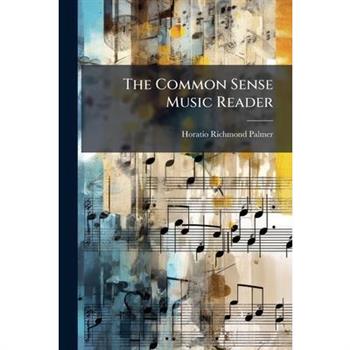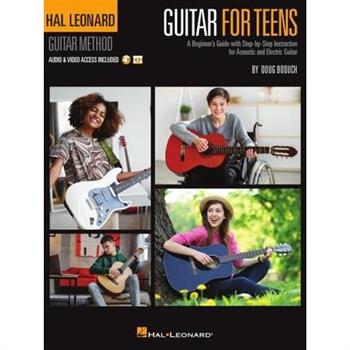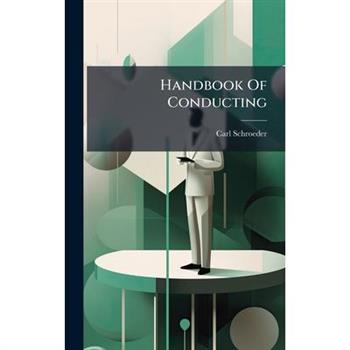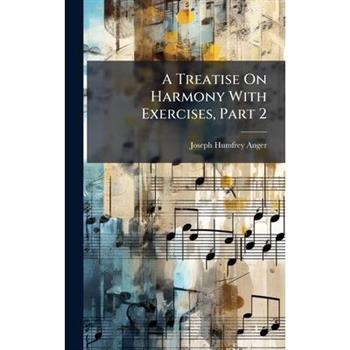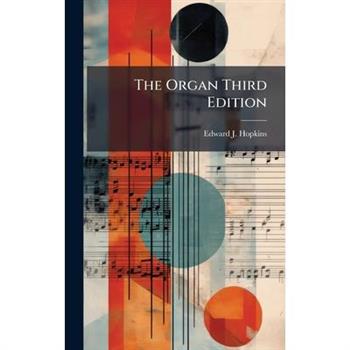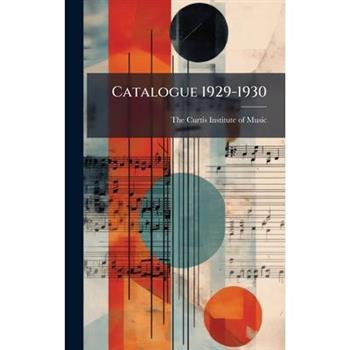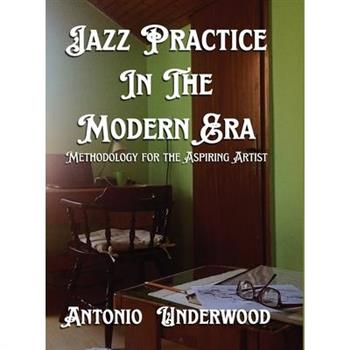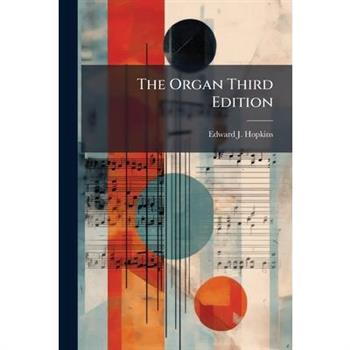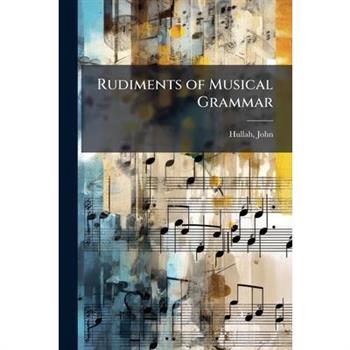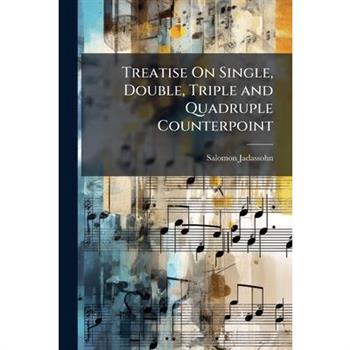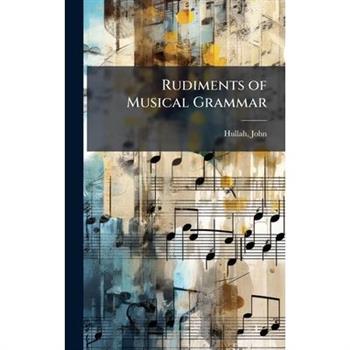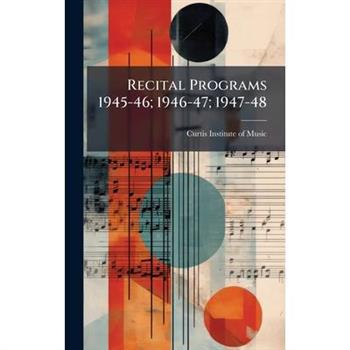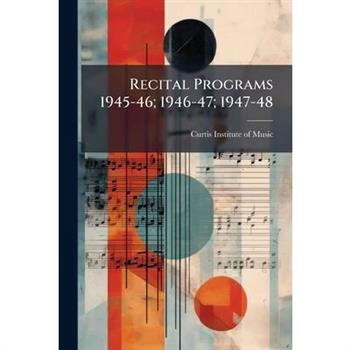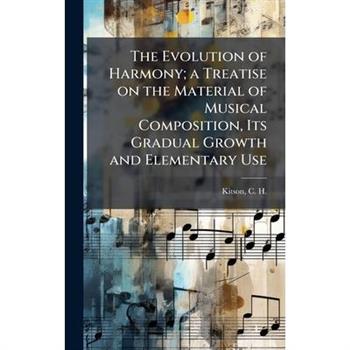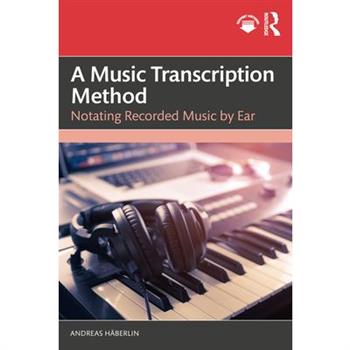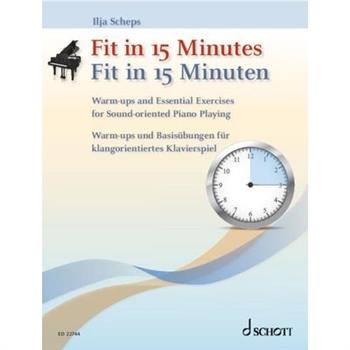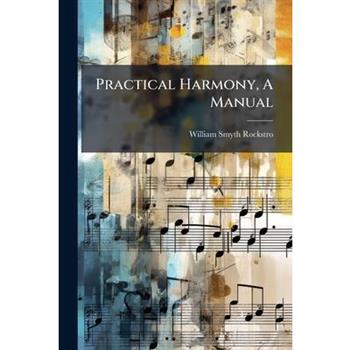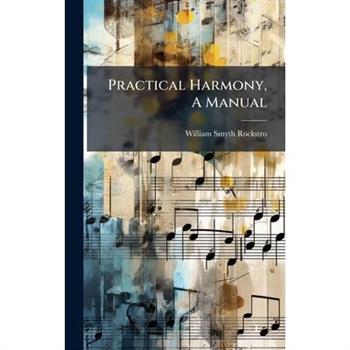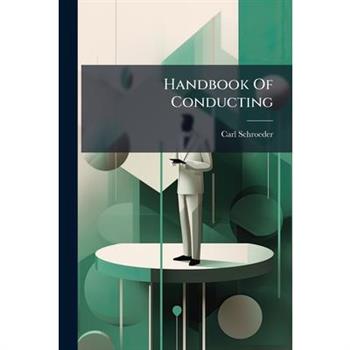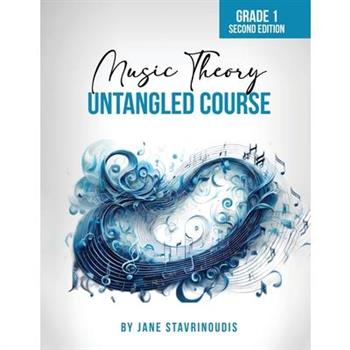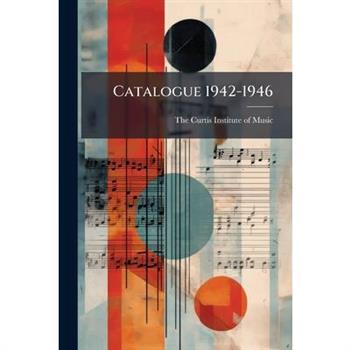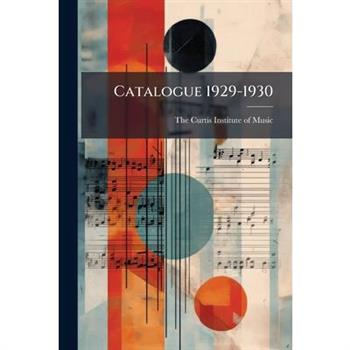Cognate Music Theories
This volume explores the possibilities of cognate music theory, a concept introduced by musicologist John Walter Hill to describe culturally and historically situated music theory.Cognate music theories offer a new way of thinking about music theory, music history, and the relationship between insider and outsider perspectives when researchers mediate between their own historical and cultural position, and that of the originators of the music they are studying. With contributions from noted scholars of musicology, music theory, and ethnomusicology, this volume develops a variety of approaches using the cognate music theory framework and shows how this concept enables more nuanced and critical analyses of music in historical context.Addressing topics in music from the seventeenth to nineteenth centuries, this volume will be relevant to musicologists, music theorists, and all researchers interested in reflecting critically on what it means to construct a theory of music.Chapter 9 of this book is freely available as a downloadable Open Access PDF at http: //www.taylorfrancis.com under a Creative Commons [Attribution-Non Commercial-No Derivatives (CC-BY-NC-ND)] 4.0 license.
Exercises Elementary Counterpoint
Exercises in Elementary Counterpoint, by Percy Goetschius, offers a comprehensive guide to understanding and mastering the principles of counterpoint. Designed for students and musicians alike, this book provides a structured approach to learning the art of combining melodies effectively. Through numerous exercises and examples, Goetschius illuminates the fundamental rules and techniques of counterpoint, enabling readers to develop their compositional skills and enhance their understanding of musical harmony. This enduring work remains a valuable resource for anyone seeking to deepen their knowledge of classical music theory and composition. Whether you are a student, teacher, or simply a lover of music, this book will provide valuable insights into the art of counterpoint.This work has been selected by scholars as being culturally important, and is part of the knowledge base of civilization as we know it. This work was reproduced from the original artifact, and remains as true to the original work as possible. Therefore, you will see the original copyright references, library stamps (as most of these works have been housed in our most important libraries around the world), and other notations in the work.This work is in the public domain in the United States of America, and possibly other nations. Within the United States, you may freely copy and distribute this work, as no entity (individual or corporate) has a copyright on the body of the work.As a reproduction of a historical artifact, this work may contain missing or blurred pages, poor pictures, errant marks, etc. Scholars believe, and we concur, that this work is important enough to be preserved, reproduced, and made generally available to the public. We appreciate your support of the preservation process, and thank you for being an important part of keeping this knowledge alive and relevant.
Catalogo De'soli, Duetti, Trii, Quadri, Quintetti, Partite, De'concerti E Delle Sinfonie Per Cembalo, Violino, Flauto Traverso Ed Altri Stromenti Che Si Trovano In Manoscritto Nella Officina Musica
"Catalogo De'soli, Duetti, Trii, Quadri, Quintetti, Partite, De'concerti E Delle Sinfonie Per Cembalo, Violino, Flauto Traverso Ed Altri Stromenti Che Si Trovano In Manoscritto Nella Officina Musica" is a comprehensive catalog detailing a collection of musical works. Compiled by Christian U. Ringmacher, this catalog provides an invaluable resource for musicologists, musicians, and enthusiasts interested in exploring a wide array of compositions. The catalog showcases solos, duets, trios, quartets, quintets, partitas, concertos, and symphonies scored for keyboard instruments such as the harpsichord (cembalo), violin, transverse flute, and other instruments. It lists works available in manuscript form within the Officina Musica, offering a glimpse into the repertoire and performance practices of the era. This work preserves information about lesser-known or unpublished compositions, making it a valuable tool for historical music research and performance revival.This work has been selected by scholars as being culturally important, and is part of the knowledge base of civilization as we know it. This work was reproduced from the original artifact, and remains as true to the original work as possible. Therefore, you will see the original copyright references, library stamps (as most of these works have been housed in our most important libraries around the world), and other notations in the work.This work is in the public domain in the United States of America, and possibly other nations. Within the United States, you may freely copy and distribute this work, as no entity (individual or corporate) has a copyright on the body of the work.As a reproduction of a historical artifact, this work may contain missing or blurred pages, poor pictures, errant marks, etc. Scholars believe, and we concur, that this work is important enough to be preserved, reproduced, and made generally available to the public. We appreciate your support of the preservation process, and thank you for being an important part of keeping this knowledge alive and relevant.
Kaleidoscopes for Cello Book 1
Full of rich, detailed, watercolor illustrations, Kaleidoscopes Book 1 opens a magical world for the beginning cellist.The revolutionary method synthesizes Montessori, Suzuki, and Kod獺ly philosophies into a flexible, robust and joyful approach. Genuine folk songs encourage singing and connect children to the heritage of many cultures, while movable-do solfege builds musical understanding and by-ear skills. Technique is approached comprehensively through child-friendly movement building blocks and kinesthetic experiences. The sequence of technique is separated from repertoire along a flexible and customizable design, allowing teachers to easily accommodate individual learners' pace and readiness. Students are free to follow their curiosity and explore new songs, increasing their sense of ownership and encouraging self-directed learning.The recording is a family favorite, with whimsical piano settings and beautiful soprano (vocal) and cello performances of each song. The album is available to stream on Spotify, Apple Music, and other major platforms.
Studies In Rhythm
"Studies In Rhythm" by Charles H. Sears offers a detailed exploration into the fundamental principles of rhythm in music. This book delves into the intricacies of rhythmic structure, providing valuable insights for musicians, composers, and music scholars alike. Sears examines various aspects of rhythm, from basic concepts to more complex applications, enhancing the reader's understanding of how rhythm shapes and defines musical expression.A valuable resource for students and educators, "Studies In Rhythm" provides a comprehensive foundation in rhythm analysis and composition. The book's enduring appeal lies in its clear explanations and practical examples, making it an essential addition to any music library.This work has been selected by scholars as being culturally important, and is part of the knowledge base of civilization as we know it. This work was reproduced from the original artifact, and remains as true to the original work as possible. Therefore, you will see the original copyright references, library stamps (as most of these works have been housed in our most important libraries around the world), and other notations in the work.This work is in the public domain in the United States of America, and possibly other nations. Within the United States, you may freely copy and distribute this work, as no entity (individual or corporate) has a copyright on the body of the work.As a reproduction of a historical artifact, this work may contain missing or blurred pages, poor pictures, errant marks, etc. Scholars believe, and we concur, that this work is important enough to be preserved, reproduced, and made generally available to the public. We appreciate your support of the preservation process, and thank you for being an important part of keeping this knowledge alive and relevant.
Palmer's Piano Primer
Palmer's Piano Primer is a comprehensive guide to learning the piano. Designed for beginners, this book offers a systematic and clear explanation of the fundamental principles of piano playing. It covers essential techniques, music theory, and exercises to build a strong foundation. In addition to Palmer's expert instruction, the primer includes "Schumann's 68 Rules for Beginners," providing valuable insights and advice from the renowned composer Robert Schumann. This combination of practical lessons and insightful rules makes Palmer's Piano Primer an invaluable resource for aspiring pianists.Whether you are just starting your musical journey or looking to improve your skills, this primer will guide you toward confident and expressive piano playing.This work has been selected by scholars as being culturally important, and is part of the knowledge base of civilization as we know it. This work was reproduced from the original artifact, and remains as true to the original work as possible. Therefore, you will see the original copyright references, library stamps (as most of these works have been housed in our most important libraries around the world), and other notations in the work.This work is in the public domain in the United States of America, and possibly other nations. Within the United States, you may freely copy and distribute this work, as no entity (individual or corporate) has a copyright on the body of the work.As a reproduction of a historical artifact, this work may contain missing or blurred pages, poor pictures, errant marks, etc. Scholars believe, and we concur, that this work is important enough to be preserved, reproduced, and made generally available to the public. We appreciate your support of the preservation process, and thank you for being an important part of keeping this knowledge alive and relevant.
A Grammar Of Music
"A Grammar Of Music" by Karl Th K K?1/4hne is a comprehensive guide to the fundamental principles of music theory. This book explores the essential elements of musical construction, providing readers with a solid foundation in harmony, counterpoint, and musical form. It is an invaluable resource for students, composers, and anyone seeking a deeper understanding of the language of music.With clear explanations and practical examples, K?1/4hne elucidates complex concepts, making this grammar accessible to both beginners and seasoned musicians. Delve into the intricacies of musical composition and unlock the secrets of creating beautiful and meaningful music. This work has been selected by scholars as being culturally important, and is part of the knowledge base of civilization as we know it. This work was reproduced from the original artifact, and remains as true to the original work as possible. Therefore, you will see the original copyright references, library stamps (as most of these works have been housed in our most important libraries around the world), and other notations in the work.This work is in the public domain in the United States of America, and possibly other nations. Within the United States, you may freely copy and distribute this work, as no entity (individual or corporate) has a copyright on the body of the work.As a reproduction of a historical artifact, this work may contain missing or blurred pages, poor pictures, errant marks, etc. Scholars believe, and we concur, that this work is important enough to be preserved, reproduced, and made generally available to the public. We appreciate your support of the preservation process, and thank you for being an important part of keeping this knowledge alive and relevant.
Catalogo De'soli, Duetti, Trii, Quadri, Quintetti, Partite, De'concerti E Delle Sinfonie Per Cembalo, Violino, Flauto Traverso Ed Altri Stromenti Che Si Trovano In Manoscritto Nella Officina Musica
"Catalogo De'soli, Duetti, Trii, Quadri, Quintetti, Partite, De'concerti E Delle Sinfonie Per Cembalo, Violino, Flauto Traverso Ed Altri Stromenti Che Si Trovano In Manoscritto Nella Officina Musica" is a comprehensive catalog detailing a collection of musical works. Compiled by Christian U. Ringmacher, this catalog provides an invaluable resource for musicologists, musicians, and enthusiasts interested in exploring a wide array of compositions. The catalog showcases solos, duets, trios, quartets, quintets, partitas, concertos, and symphonies scored for keyboard instruments such as the harpsichord (cembalo), violin, transverse flute, and other instruments. It lists works available in manuscript form within the Officina Musica, offering a glimpse into the repertoire and performance practices of the era. This work preserves information about lesser-known or unpublished compositions, making it a valuable tool for historical music research and performance revival.This work has been selected by scholars as being culturally important, and is part of the knowledge base of civilization as we know it. This work was reproduced from the original artifact, and remains as true to the original work as possible. Therefore, you will see the original copyright references, library stamps (as most of these works have been housed in our most important libraries around the world), and other notations in the work.This work is in the public domain in the United States of America, and possibly other nations. Within the United States, you may freely copy and distribute this work, as no entity (individual or corporate) has a copyright on the body of the work.As a reproduction of a historical artifact, this work may contain missing or blurred pages, poor pictures, errant marks, etc. Scholars believe, and we concur, that this work is important enough to be preserved, reproduced, and made generally available to the public. We appreciate your support of the preservation process, and thank you for being an important part of keeping this knowledge alive and relevant.
Trinity Rock & Pop 2018 Vocals (Book/Online Audio)
(Vocal Instruction). Whether you are self-taught or taking lessons, learning for fun or heading for a career in the music industry, Trinity College London Rock & Pop exams will help you develop valuable playing skills and achieve your musical ambitions. Available for bass, drums, guitar, keyboard and vocals, from Initial (beginner) to Grade 8 (advanced), these exams cover a wide variety of music and artists giving a great choice in all rock and pop styles.
A Grammar Of Music
"A Grammar Of Music" by Karl Th K K?1/4hne is a comprehensive guide to the fundamental principles of music theory. This book explores the essential elements of musical construction, providing readers with a solid foundation in harmony, counterpoint, and musical form. It is an invaluable resource for students, composers, and anyone seeking a deeper understanding of the language of music.With clear explanations and practical examples, K?1/4hne elucidates complex concepts, making this grammar accessible to both beginners and seasoned musicians. Delve into the intricacies of musical composition and unlock the secrets of creating beautiful and meaningful music. This work has been selected by scholars as being culturally important, and is part of the knowledge base of civilization as we know it. This work was reproduced from the original artifact, and remains as true to the original work as possible. Therefore, you will see the original copyright references, library stamps (as most of these works have been housed in our most important libraries around the world), and other notations in the work.This work is in the public domain in the United States of America, and possibly other nations. Within the United States, you may freely copy and distribute this work, as no entity (individual or corporate) has a copyright on the body of the work.As a reproduction of a historical artifact, this work may contain missing or blurred pages, poor pictures, errant marks, etc. Scholars believe, and we concur, that this work is important enough to be preserved, reproduced, and made generally available to the public. We appreciate your support of the preservation process, and thank you for being an important part of keeping this knowledge alive and relevant.
Dreaming and Thinking in Music
In Dreaming and Thinking in Music, Bruce Adolphe harnesses his wide-ranging experiences as a composer and educator to tackle one of the more elusive questions in music composition: how to get from technical ability to creative creation. Unlike standard composition textbooks that focus on writing melody, harmony, counterpoint, and rhythm, Dreaming and Thinking in Music guides readers to explore the rarely discussed problems of how to get ideas, and how to follow up with the appropriate techniques to realize those ideas. Exercises throughout the book prepare readers to receive, recognize, and seize moments of inspiration or musical vision through a variety of concepts to prompt imaginative musical thinking. Essays introduce and further explore topics such as hypnagogic dreams, improvisation, personal voice, composing based on lived experiences, and the influences of visual art, poetry, film, theater, and science. Adolphe's playful, erudite, yet fundamentally accessible approach serves as a guide for any composer, musician, or student interested in exploring their musical creativity from a non-technical viewpoint.
Modern Band Handbook
Modern band is a term used to describe popular music education in schools and is increasingly incorporated in K-12 and pre-service music teacher education programs. The Modern Band Handbook shines a light on the practices and perspectives of modern band teachers from across K-12 and higher education throughout the USA and gives practical advice on how to incorporate modern band into music classrooms. The chapters are grouped into five main themes: Arranging and Creating Covers; Songwriting; Teaching Modern Band Instruments; Social Justice and Cultural Responsiveness; and Music Technology. Each chapter offers a lesson plan consisting of pedagogical methods, activities, assignments, and lesson objectives. Lesson plans include accommodations, adaptations, and extensions to provide ideas for teachers who would like to make modifications for different ages and experience levels. The companion website features downloadable resources, additional assignments, and audio and video examples. Full of practical tips from forty-three teachers and music education faculty members from a broad variety of backgrounds and contexts, The Modern Band Handbook is an invaluable resource for all popular music educators.
Ultimate Ukulele Technique & Warm-up Book
Unlock Your True Potential and Transform Your Ukulele Playing!The Ultimate Ukulele Technique & Warm-Up Book is your all-in-one guide to developing finger strength, speed, accuracy, and control. Whether you're a beginner wanting good technique, an advanced player seeking new challenges, or a teacher looking for practical resources-this book has everything you need to level up your technique.���� Inside, You'll Discover: Progressive one, two, three, and four-finger warm-up exercisesThe ultimate chord progression workout to boost your transitionsEight graded solo pieces in a variety of musical stylesEssential pop, jazz, and blues strumming patternsA complete chord, scale, and arpeggio referenceRhythm reading tips, music notation, and ukulele tabProven practice plans and expert technique strategiesWhether you teach, perform, or play for fun, this technique book is the perfect companion for anyone serious about improving their ukulele playing.Ideal for students, self-learners, teachers, and ukulele enthusiasts of all levels!
Teach Music Change Lives
Teach Music Change Lives - 12 Keys to Unlock The Ultimate Music Teachers Success Strategies by International Best-Selling Author Glory St. GermainCan you imagine the world without music? IMPOSSIBLE!The world needs music. And the world needs music teachers, like you.When You Teach Music - You Change Lives. Your impact as a teacher extends far beyond the notes on a page - it's time to step fully into your purpose. Becoming a music teacher isn't just a career - it's a calling. It's passion-based, purpose-driven journey to teach, coach, and mentor musicians of all ages while awakening the entrepreneurial spirit to build a profit-focused legacy. In Teaching Music Change Lives, you'll embark on a transformative journey through 12 keys woven with personal stories, laughter, challenges, proven techniques, and powerful teaching formulas to Unlock the Ultimate Music Teachers Success Strategies. "Teaching music is awakening passion, activating purpose & amplifying profitability to profoundly change lives." Teach Music Change Lives - A Masterpiece"Glory St. Germain has composed a masterpiece for music educators - uniting passion, purpose, and profitability in perfect harmony. Teach Music Change Lives is more than a guide - it's an invitation to step into your power as a teacher, entrepreneur, and leader in the world of music education."- Jack Canfield, Coauthor of Chicken Soup for the Soul(R) and The Success Principles(TM)
Music and Songwriting for Teens
Let's face it-we've all heard some pretty terrible songs. Don't let your songs join the cringefest. You have what it takes to become a master songwriter...you need a little guidance.This is the perfect time to dream big, and your big dream is to have your songs heard by the crowds, played on repeat, and sung along to. Some people might look at you like you're crazy or that this isn't possible-but that won't stop you. The haters are gonna hate. You're here to create. But passion alone isn't enough.Do your chords sometimes sound a little off? Are your lyrics missing that hook that sticks in people's minds? Or worse, are you just staring at that blank page and waiting for inspiration?Right now, your mind might be bursting with ideas-characters, emotions, beats, melodies-all swirling around with nowhere to land. You don't need to wait for them to fall into place magically. You need a guide that shows you how to shape those wild ideas into unforgettable songs.This is that guide. Packed with everything from improving your emotional intelligence and breaking down song structure to exploring cultural diversity and learning from music legends, you'll have the tools and confidence you need to level up as a songwriter!In this ultimate songwriting guide for teens, you will discover: How to channel your strongest emotions into powerful songs-especially the tough onesA complete setup guide to create your perfect songwriting sanctuaryThe secret to writing relatable characters that make your songs hit homePractical exercises to experiment with rhyme schemes so you can see the impact of eachWhat Kylie Minogue and Harry Styles have in common, and how you can craft songs that are just as unforgettable as theirsThe lowdown on chords, progressions, scales, and melodies, plus how to blend them into flawless harmonyHow to go beyond the verse-chorus dynamics and spice up your song structure What to do when creativity dries up, with practical steps to break through the frustrating writer's blockWhy imperfection is your secret weapon-and how embracing it makes your songs authentically youYou already have enough textbooks to study, and that's boring. This isn't one of them.This book has been created specifically for you. It's filled with interactive activities, real-world examples, and fun challenges, designed to get you writing, experimenting, and growing as an artist.
The Evolution of Harmony; a Treatise on the Material of Musical Composition, Its Gradual Growth and Elementary Use
"The Evolution of Harmony" by C.H. Kitson offers a detailed exploration of the development of harmony within musical composition. Originally published in 1914, this treatise examines the foundational elements of music, tracing their gradual evolution and practical application. Kitson's work provides valuable insights into the techniques of harmony and counterpoint, making it an essential resource for students and scholars of music theory. This book delves into the intricacies of musical structure, offering a comprehensive guide to understanding the underlying principles that govern harmonic progression. Its enduring appeal lies in its systematic approach and clear explanations, which make complex concepts accessible to both novice and experienced musicians. This work has been selected by scholars as being culturally important, and is part of the knowledge base of civilization as we know it. This work was reproduced from the original artifact, and remains as true to the original work as possible. Therefore, you will see the original copyright references, library stamps (as most of these works have been housed in our most important libraries around the world), and other notations in the work.This work is in the public domain in the United States of America, and possibly other nations. Within the United States, you may freely copy and distribute this work, as no entity (individual or corporate) has a copyright on the body of the work.As a reproduction of a historical artifact, this work may contain missing or blurred pages, poor pictures, errant marks, etc. Scholars believe, and we concur, that this work is important enough to be preserved, reproduced, and made generally available to the public. We appreciate your support of the preservation process, and thank you for being an important part of keeping this knowledge alive and relevant.
The Golden Treasury Of Piano-music
"The Golden Treasury Of Piano-music, Volume 5" is a curated collection of pieces originally composed for the virginal, spinet, harpsichord, and clavichord during the sixteenth, seventeenth, and eighteenth centuries. This volume offers a unique glimpse into the rich musical heritage of these eras, presenting works by composers who shaped the soundscape of their time. Ideal for both students and seasoned musicians, this treasury provides valuable insights into the performance practices and stylistic nuances of early keyboard music. Discover the elegance and intricacy of these timeless compositions, perfect for enriching your repertoire and deepening your understanding of classical music history.This work has been selected by scholars as being culturally important, and is part of the knowledge base of civilization as we know it. This work was reproduced from the original artifact, and remains as true to the original work as possible. Therefore, you will see the original copyright references, library stamps (as most of these works have been housed in our most important libraries around the world), and other notations in the work.This work is in the public domain in the United States of America, and possibly other nations. Within the United States, you may freely copy and distribute this work, as no entity (individual or corporate) has a copyright on the body of the work.As a reproduction of a historical artifact, this work may contain missing or blurred pages, poor pictures, errant marks, etc. Scholars believe, and we concur, that this work is important enough to be preserved, reproduced, and made generally available to the public. We appreciate your support of the preservation process, and thank you for being an important part of keeping this knowledge alive and relevant.
Palmer's Piano Primer
Palmer's Piano Primer is a comprehensive guide to learning the piano. Designed for beginners, this book offers a systematic and clear explanation of the fundamental principles of piano playing. It covers essential techniques, music theory, and exercises to build a strong foundation. In addition to Palmer's expert instruction, the primer includes "Schumann's 68 Rules for Beginners," providing valuable insights and advice from the renowned composer Robert Schumann. This combination of practical lessons and insightful rules makes Palmer's Piano Primer an invaluable resource for aspiring pianists.Whether you are just starting your musical journey or looking to improve your skills, this primer will guide you toward confident and expressive piano playing.This work has been selected by scholars as being culturally important, and is part of the knowledge base of civilization as we know it. This work was reproduced from the original artifact, and remains as true to the original work as possible. Therefore, you will see the original copyright references, library stamps (as most of these works have been housed in our most important libraries around the world), and other notations in the work.This work is in the public domain in the United States of America, and possibly other nations. Within the United States, you may freely copy and distribute this work, as no entity (individual or corporate) has a copyright on the body of the work.As a reproduction of a historical artifact, this work may contain missing or blurred pages, poor pictures, errant marks, etc. Scholars believe, and we concur, that this work is important enough to be preserved, reproduced, and made generally available to the public. We appreciate your support of the preservation process, and thank you for being an important part of keeping this knowledge alive and relevant.
The Golden Treasury Of Piano-music
"The Golden Treasury Of Piano-music, Volume 5" is a curated collection of pieces originally composed for the virginal, spinet, harpsichord, and clavichord during the sixteenth, seventeenth, and eighteenth centuries. This volume offers a unique glimpse into the rich musical heritage of these eras, presenting works by composers who shaped the soundscape of their time. Ideal for both students and seasoned musicians, this treasury provides valuable insights into the performance practices and stylistic nuances of early keyboard music. Discover the elegance and intricacy of these timeless compositions, perfect for enriching your repertoire and deepening your understanding of classical music history.This work has been selected by scholars as being culturally important, and is part of the knowledge base of civilization as we know it. This work was reproduced from the original artifact, and remains as true to the original work as possible. Therefore, you will see the original copyright references, library stamps (as most of these works have been housed in our most important libraries around the world), and other notations in the work.This work is in the public domain in the United States of America, and possibly other nations. Within the United States, you may freely copy and distribute this work, as no entity (individual or corporate) has a copyright on the body of the work.As a reproduction of a historical artifact, this work may contain missing or blurred pages, poor pictures, errant marks, etc. Scholars believe, and we concur, that this work is important enough to be preserved, reproduced, and made generally available to the public. We appreciate your support of the preservation process, and thank you for being an important part of keeping this knowledge alive and relevant.
The Abc Of Music
"The ABC of Music" by Auguste-Mathieu Panseron and Giuseppe Concone is a comprehensive guide to music theory and vocal instruction, designed to provide a foundational understanding for aspiring musicians. This instructive work covers essential aspects of music, from basic notation and sight-reading to more advanced concepts of harmony and vocal technique. Panseron and Concone, renowned for their expertise, offer clear explanations and practical exercises aimed at developing a strong musical base. This volume is invaluable for students and educators alike, offering a structured approach to learning and teaching music. With its focus on fundamental principles, "The ABC of Music" remains a timeless resource for anyone seeking to master the art of music.This work has been selected by scholars as being culturally important, and is part of the knowledge base of civilization as we know it. This work was reproduced from the original artifact, and remains as true to the original work as possible. Therefore, you will see the original copyright references, library stamps (as most of these works have been housed in our most important libraries around the world), and other notations in the work.This work is in the public domain in the United States of America, and possibly other nations. Within the United States, you may freely copy and distribute this work, as no entity (individual or corporate) has a copyright on the body of the work.As a reproduction of a historical artifact, this work may contain missing or blurred pages, poor pictures, errant marks, etc. Scholars believe, and we concur, that this work is important enough to be preserved, reproduced, and made generally available to the public. We appreciate your support of the preservation process, and thank you for being an important part of keeping this knowledge alive and relevant.
The Songwriting Secrets of the Beatles
This groundbreaking book sets out to explore The Beatles' songwriting techniques in a clear and readable style. It is aimed not only at musicians but anyone who has ever enjoyed the work of one of the most productive and successful songwriting partnerships of the 20th century. Author Dominic Pedler explains the chord sequences, melodies and harmonies that made up The Beatles' self penned songs and how they uncannily complemented the lyrical themes. He also assesses the contributions that rhythm, form and arrangement made to the Beatles unique sound. Throughout the book the printed music of the Beatles' songs appears alongside the text, illustrating the authors explanations.
Your First Year as an Elementary Music Teacher
Each year, college graduates start jobs teaching elementary music, but not all of them are provided with the direction that they need at the beginning of their career. Very few school districts have clearly stated expectations for what elementary students should know and be able to do in music, so teachers are on their own developing and presenting daily lessons. Your First Year as an Elementary Music Teacher offers a much-needed resource specifically written for K-5 music teachers and walks you through the challenges and triumphs of your first year in the classroom, building a strong foundation for a fulfilling career. From pre-planning essentials to engaging, ready-to-use lesson plans, this book provides practical tools and expert advice to help you succeed. Part I of the book addresses immediate concerns prior to the start of the school year and in the first few weeks: meeting school staff, organizing your music classroom and teaching materials, and preparing lessons. Part II continues with steps for building routines and completing the rest of the year with joy, including planning concerts and programs, assessing student's knowledge and skills, growing as a teacher, and coping with a discouraging day. Part III offers proven musical activities that teachers can try with their students throughout the school year, and Part IV ends with a complete set of ready-to-use lessons for weeks one through three for each elementary music age group (early childhood, intermediate grades, and upper elementary). Designed to be read quickly, and including simple and classroom-tested lessons and activities for ease of use, this book will build confidence in new teachers by offering concrete steps for success in that crucial first year. Whether you're a recent graduate or a career changer, Your First Year as an Elementary Music Teacher is an indispensable companion for a successful and fulfilling teaching career.
A Music Transcription Method
A Music Transcription Method: Notating Recorded Music by Ear teaches how to leverage music dictation in the modern music industry. The book's four parts cover aspects of preparation, process, interpretation, and industry resources related to notating recorded music by ear.
The Common Sense Music Reader
The Common Sense Music Reader, by Horatio Richmond Palmer, is a meticulously structured guide designed for novice musicians embarking on their journey into music reading. This book offers a carefully curated selection of studies and recreational pieces, tailored to facilitate gradual skill development in classroom settings. Palmer's approach prioritizes clarity and accessibility, ensuring students grasp fundamental music reading concepts effectively. This volume is an invaluable resource for educators seeking to instill a solid foundation in music literacy, providing a step-by-step methodology that demystifies music notation and empowers students to confidently interpret and perform musical scores. "The Common Sense Music Reader" remains relevant for both historical study and practical application in contemporary music education.This work has been selected by scholars as being culturally important, and is part of the knowledge base of civilization as we know it. This work was reproduced from the original artifact, and remains as true to the original work as possible. Therefore, you will see the original copyright references, library stamps (as most of these works have been housed in our most important libraries around the world), and other notations in the work.This work is in the public domain in the United States of America, and possibly other nations. Within the United States, you may freely copy and distribute this work, as no entity (individual or corporate) has a copyright on the body of the work.As a reproduction of a historical artifact, this work may contain missing or blurred pages, poor pictures, errant marks, etc. Scholars believe, and we concur, that this work is important enough to be preserved, reproduced, and made generally available to the public. We appreciate your support of the preservation process, and thank you for being an important part of keeping this knowledge alive and relevant.
New Standards: 101 Lead Sheets by Women Composers - B-Flat Edition
(Berklee Guide). Extraordinary jazz by 101 women composers Now available for B-flat instruments! From bebop to blues, from swing to global jazz styles, Terri Lyne Carrington's collection includes a wide variety of well-known works and hidden gems, within a broad range of jazz and jazz-adjacent styles. This collection celebrates the work of many women who shaped the music of the past century, as well as its unsung heroes and emerging contemporary visionaries. Available in print for the first time, you can access works from some of the best women jazz composers, such as "Throw It Away" (Abbey Lincoln), "Lawns" (Carla Bley), "Blue Nile" (Alice Coltrane), "Choro Dancado" (Maria Schneider), and "Blues for Herb" (Emily Remler). Learn and discover the works of esperanza spalding, Toshiko Akiyoshi, Geri Allen, Cecile McLorin Salvant, Cassandra Wilson, Dianne Reeves, Dorothy Ashby, Mary Lou Williams, Nubya Garcia, Nicole Mitchell, Melissa Aldana, Terri Lyne Carrington, and many others. From a 1922 piece by the influential Lil Hardin Armstrong to new releases by emerging contemporary artists, this collection finally opens a door to the brilliant colors and fresh sounds by so many important and often underacknowledged voices of jazz.
The Common Sense Music Reader
The Common Sense Music Reader, by Horatio Richmond Palmer, is a meticulously structured guide designed for novice musicians embarking on their journey into music reading. This book offers a carefully curated selection of studies and recreational pieces, tailored to facilitate gradual skill development in classroom settings. Palmer's approach prioritizes clarity and accessibility, ensuring students grasp fundamental music reading concepts effectively. This volume is an invaluable resource for educators seeking to instill a solid foundation in music literacy, providing a step-by-step methodology that demystifies music notation and empowers students to confidently interpret and perform musical scores. "The Common Sense Music Reader" remains relevant for both historical study and practical application in contemporary music education.This work has been selected by scholars as being culturally important, and is part of the knowledge base of civilization as we know it. This work was reproduced from the original artifact, and remains as true to the original work as possible. Therefore, you will see the original copyright references, library stamps (as most of these works have been housed in our most important libraries around the world), and other notations in the work.This work is in the public domain in the United States of America, and possibly other nations. Within the United States, you may freely copy and distribute this work, as no entity (individual or corporate) has a copyright on the body of the work.As a reproduction of a historical artifact, this work may contain missing or blurred pages, poor pictures, errant marks, etc. Scholars believe, and we concur, that this work is important enough to be preserved, reproduced, and made generally available to the public. We appreciate your support of the preservation process, and thank you for being an important part of keeping this knowledge alive and relevant.
Hal Leonard Guitar for Teens Method: A Beginner's Guide with Step-By-Step Instruction for Acoustic and Electric Guitar (Book/Online Audio & Video)
(Guitar Method). Hal Leonard Guitar Method for Teens is the go-to guide for young adults learning the guitar whether you're just picking one up for the first time or already know a few chords. It's super easy to follow and empowering, with step-by-step lessons that work with or without a teacher. Every exercise comes with a video to show you exactly how it's all done, and each song includes a full-band audio track so you can jam along like you're on stage. Whether you want to strum an acoustic or shred on electric, this course will put you on the path to playing real music fast! And with popular songs you'll actually want to play, staying motivated is no problem! You will learn: * How to Tune and Hold the Guitar * The Parts of the Guitar * How to Read and PLay Notes and Tab * Basic Musical Symbols and Chords * Flat-Picking Techniques * Fingerstyle Techniques * Useful Power Chords * Foundational Open Chords * Moveable Barre Chords * Palm Muting * Arpeggios * Strum Patterns * Popular Songs * and much More!
Handbook Of Conducting
Handbook of Conducting by Carl Schroeder is a comprehensive guide for aspiring and seasoned conductors alike. This handbook delves into the intricacies of leading orchestras and choral groups, offering invaluable insights into technique, interpretation, and rehearsal strategies. From mastering baton technique to understanding the nuances of musical expression, Schroeder's handbook provides a wealth of practical knowledge. Explore detailed discussions on score preparation, dynamics, phrasing, and tempo, equipping conductors with the tools to bring out the best in their ensembles. Whether you are a student conductor or a seasoned professional, Handbook of Conducting is an indispensable resource for elevating your craft and inspiring your musicians.This work has been selected by scholars as being culturally important, and is part of the knowledge base of civilization as we know it. This work was reproduced from the original artifact, and remains as true to the original work as possible. Therefore, you will see the original copyright references, library stamps (as most of these works have been housed in our most important libraries around the world), and other notations in the work.This work is in the public domain in the United States of America, and possibly other nations. Within the United States, you may freely copy and distribute this work, as no entity (individual or corporate) has a copyright on the body of the work.As a reproduction of a historical artifact, this work may contain missing or blurred pages, poor pictures, errant marks, etc. Scholars believe, and we concur, that this work is important enough to be preserved, reproduced, and made generally available to the public. We appreciate your support of the preservation process, and thank you for being an important part of keeping this knowledge alive and relevant.
A Treatise On Harmony With Exercises, Part 2
"A Treatise On Harmony With Exercises, Part 2" by Joseph Humfrey Anger delves into the intricacies of musical harmony. This volume offers a comprehensive exploration of harmonic principles, making it an invaluable resource for students, musicians, and anyone seeking a deeper understanding of music theory. The book provides detailed explanations and practical exercises designed to enhance the reader's grasp of complex harmonic concepts. Its systematic approach ensures a thorough grounding in the fundamentals, while also challenging the reader to apply these principles creatively. Whether used in a classroom setting or for self-study, this treatise is essential for mastering the art of harmony.This work has been selected by scholars as being culturally important, and is part of the knowledge base of civilization as we know it. This work was reproduced from the original artifact, and remains as true to the original work as possible. Therefore, you will see the original copyright references, library stamps (as most of these works have been housed in our most important libraries around the world), and other notations in the work.This work is in the public domain in the United States of America, and possibly other nations. Within the United States, you may freely copy and distribute this work, as no entity (individual or corporate) has a copyright on the body of the work.As a reproduction of a historical artifact, this work may contain missing or blurred pages, poor pictures, errant marks, etc. Scholars believe, and we concur, that this work is important enough to be preserved, reproduced, and made generally available to the public. We appreciate your support of the preservation process, and thank you for being an important part of keeping this knowledge alive and relevant.
The Organ Third Edition
The Organ, now in its third edition, remains a definitive resource for organists, students, and enthusiasts alike. Authored by Edward J. Hopkins, this comprehensive guide explores the intricacies of the organ, covering its history, construction, and performance techniques. From its evolution as a musical instrument to its role in sacred and secular music, this book delves into the rich heritage of the organ.This edition features updated information on organ building, maintenance, and repertoire. Whether you are a seasoned performer or just beginning to explore the instrument, The Organ offers valuable insights and practical guidance. Discover the enduring appeal of this majestic instrument through detailed explanations and historical context.This work has been selected by scholars as being culturally important, and is part of the knowledge base of civilization as we know it. This work was reproduced from the original artifact, and remains as true to the original work as possible. Therefore, you will see the original copyright references, library stamps (as most of these works have been housed in our most important libraries around the world), and other notations in the work.This work is in the public domain in the United States of America, and possibly other nations. Within the United States, you may freely copy and distribute this work, as no entity (individual or corporate) has a copyright on the body of the work.As a reproduction of a historical artifact, this work may contain missing or blurred pages, poor pictures, errant marks, etc. Scholars believe, and we concur, that this work is important enough to be preserved, reproduced, and made generally available to the public. We appreciate your support of the preservation process, and thank you for being an important part of keeping this knowledge alive and relevant.
Catalogue 1929-1930
A meticulously reproduced catalog from the Curtis Institute of Music covering the years 1929-1930. This catalog offers a fascinating glimpse into the curriculum, faculty, and student body of one of the world's leading conservatories during a pivotal period in musical history. It provides valuable insights into the pedagogical approaches and performance practices of the era, showcasing the institute's commitment to fostering exceptional talent and preserving the traditions of classical music. Researchers, music historians, and alumni of the Curtis Institute will find this catalog an invaluable resource. It sheds light on the development of music education and the evolution of performance standards, while also serving as a testament to the enduring legacy of the Curtis Institute of Music.This work has been selected by scholars as being culturally important, and is part of the knowledge base of civilization as we know it. This work was reproduced from the original artifact, and remains as true to the original work as possible. Therefore, you will see the original copyright references, library stamps (as most of these works have been housed in our most important libraries around the world), and other notations in the work.This work is in the public domain in the United States of America, and possibly other nations. Within the United States, you may freely copy and distribute this work, as no entity (individual or corporate) has a copyright on the body of the work.As a reproduction of a historical artifact, this work may contain missing or blurred pages, poor pictures, errant marks, etc. Scholars believe, and we concur, that this work is important enough to be preserved, reproduced, and made generally available to the public. We appreciate your support of the preservation process, and thank you for being an important part of keeping this knowledge alive and relevant.
Jazz Practice In The Modern Era
Jazz Practice in the Modern Era: Methodology for the Aspiring Artist is an essential and visionary guide for the next generation of musicians, those who seek to break free from traditional confines and explore jazz as both an art form and a cultural language. In this groundbreaking manual, acclaimed composer, performer, and educator Antonio Underwood presents a transformative methodology that speaks directly to classically trained musicians eager to navigate the world of jazz improvisation, interpretation, and innovation.More than a music theory book, this work is a manual of creative process, a rare blend of philosophical insight, cultural awareness, and practical instruction that draws on Underwood's unique experiences across genres, continents, and generations. With a background that spans Grammy Award-winning performances and academic rigor from institutions like Yale, Underwood guides readers through a deeper understanding of jazz as a living, evolving tradition.Whether you're studying at a conservatory, exploring music independently, or teaching the next wave of artists, this book offers a multidimensional approach that will expand your musical and creative horizons.Inside this book, you'll discover: How to transition from classical structure to jazz spontaneity with confidenceKey improvisational strategies rooted in tradition and modern applicationTechniques for integrating jazz concepts into academic and real-world performance settingsThe cultural and historical roots of jazz and its role in shaping modern musicInspirational insights that encourage self-expression, intuition, and authenticityWays to connect technical training to storytelling, collaboration, and personal voiceFrom bebop to hip-hop, from spirituals to swing, Jazz Practice in the Modern Era challenges aspiring artists to embrace a more expansive view of music, one that values interpretation over imitation, dialogue over direction, and soul over scale.This book is perfect for: Young musicians raised in classical music systemsEducators seeking to bridge classical and contemporary teaching methodsJazz students looking for a structured yet flexible practice frameworkMulti-genre artists pursuing a deeper understanding of improvisationAnyone passionate about the creative intersection of music, identity, and cultureWith clarity, passion, and purpose, Antonio Underwood invites musicians of all levels and backgrounds to step beyond the notes and into the freedom of expression that jazz offers. This isn't just a method book, it's a modern-day manifesto for the artist within.
The Organ Third Edition
The Organ, now in its third edition, remains a definitive resource for organists, students, and enthusiasts alike. Authored by Edward J. Hopkins, this comprehensive guide explores the intricacies of the organ, covering its history, construction, and performance techniques. From its evolution as a musical instrument to its role in sacred and secular music, this book delves into the rich heritage of the organ.This edition features updated information on organ building, maintenance, and repertoire. Whether you are a seasoned performer or just beginning to explore the instrument, The Organ offers valuable insights and practical guidance. Discover the enduring appeal of this majestic instrument through detailed explanations and historical context.This work has been selected by scholars as being culturally important, and is part of the knowledge base of civilization as we know it. This work was reproduced from the original artifact, and remains as true to the original work as possible. Therefore, you will see the original copyright references, library stamps (as most of these works have been housed in our most important libraries around the world), and other notations in the work.This work is in the public domain in the United States of America, and possibly other nations. Within the United States, you may freely copy and distribute this work, as no entity (individual or corporate) has a copyright on the body of the work.As a reproduction of a historical artifact, this work may contain missing or blurred pages, poor pictures, errant marks, etc. Scholars believe, and we concur, that this work is important enough to be preserved, reproduced, and made generally available to the public. We appreciate your support of the preservation process, and thank you for being an important part of keeping this knowledge alive and relevant.
Rudiments of Musical Grammar
"Rudiments of Musical Grammar" by John Hullah is a comprehensive guide to the fundamentals of music theory. Originally published in 1876, this book presents a systematic approach to understanding the essential elements of music, making it an invaluable resource for students and enthusiasts alike. Hullah's clear and concise explanations cover topics such as notation, rhythm, scales, intervals, and harmony. With its structured lessons and practical exercises, "Rudiments of Musical Grammar" provides a solid foundation for those seeking to deepen their knowledge of music. This enduring work remains relevant for anyone interested in the theoretical underpinnings of musical composition and performance. Hullah's insightful approach ensures that readers gain a thorough grasp of the core principles of music.This work has been selected by scholars as being culturally important, and is part of the knowledge base of civilization as we know it. This work was reproduced from the original artifact, and remains as true to the original work as possible. Therefore, you will see the original copyright references, library stamps (as most of these works have been housed in our most important libraries around the world), and other notations in the work.This work is in the public domain in the United States of America, and possibly other nations. Within the United States, you may freely copy and distribute this work, as no entity (individual or corporate) has a copyright on the body of the work.As a reproduction of a historical artifact, this work may contain missing or blurred pages, poor pictures, errant marks, etc. Scholars believe, and we concur, that this work is important enough to be preserved, reproduced, and made generally available to the public. We appreciate your support of the preservation process, and thank you for being an important part of keeping this knowledge alive and relevant.
Treatise On Single, Double, Triple and Quadruple Counterpoint
"Treatise On Single, Double, Triple and Quadruple Counterpoint" by Salomon Jadassohn, originally published in 1887, is a comprehensive exploration of advanced contrapuntal techniques. This seminal work delves into the intricacies of single, double, triple, and quadruple counterpoint, providing musicians and scholars with a deep understanding of harmonic and melodic relationships. Jadassohn's treatise remains a valuable resource for those studying music theory and composition, offering detailed explanations and practical examples. This edition makes accessible a classic text for modern musicians and researchers interested in the rich traditions of counterpoint.This work has been selected by scholars as being culturally important, and is part of the knowledge base of civilization as we know it. This work was reproduced from the original artifact, and remains as true to the original work as possible. Therefore, you will see the original copyright references, library stamps (as most of these works have been housed in our most important libraries around the world), and other notations in the work.This work is in the public domain in the United States of America, and possibly other nations. Within the United States, you may freely copy and distribute this work, as no entity (individual or corporate) has a copyright on the body of the work.As a reproduction of a historical artifact, this work may contain missing or blurred pages, poor pictures, errant marks, etc. Scholars believe, and we concur, that this work is important enough to be preserved, reproduced, and made generally available to the public. We appreciate your support of the preservation process, and thank you for being an important part of keeping this knowledge alive and relevant.
Rudiments of Musical Grammar
"Rudiments of Musical Grammar" by John Hullah is a comprehensive guide to the fundamentals of music theory. Originally published in 1876, this book presents a systematic approach to understanding the essential elements of music, making it an invaluable resource for students and enthusiasts alike. Hullah's clear and concise explanations cover topics such as notation, rhythm, scales, intervals, and harmony. With its structured lessons and practical exercises, "Rudiments of Musical Grammar" provides a solid foundation for those seeking to deepen their knowledge of music. This enduring work remains relevant for anyone interested in the theoretical underpinnings of musical composition and performance. Hullah's insightful approach ensures that readers gain a thorough grasp of the core principles of music.This work has been selected by scholars as being culturally important, and is part of the knowledge base of civilization as we know it. This work was reproduced from the original artifact, and remains as true to the original work as possible. Therefore, you will see the original copyright references, library stamps (as most of these works have been housed in our most important libraries around the world), and other notations in the work.This work is in the public domain in the United States of America, and possibly other nations. Within the United States, you may freely copy and distribute this work, as no entity (individual or corporate) has a copyright on the body of the work.As a reproduction of a historical artifact, this work may contain missing or blurred pages, poor pictures, errant marks, etc. Scholars believe, and we concur, that this work is important enough to be preserved, reproduced, and made generally available to the public. We appreciate your support of the preservation process, and thank you for being an important part of keeping this knowledge alive and relevant.
Recital Programs 1945-46; 1946-47; 1947-48
A collection of recital programs from the Curtis Institute of Music spanning the years 1945-46, 1946-47, and 1947-48. This compilation offers a glimpse into the repertoire and performance practices of one of the world's leading music conservatories during the mid-20th century. These programs serve as a valuable resource for music historians, students, and anyone interested in the history of classical music performance and music education. Explore the works performed by young musicians who would later become renowned artists, and gain insight into the musical tastes and pedagogical approaches of the era. This work has been selected by scholars as being culturally important, and is part of the knowledge base of civilization as we know it. This work was reproduced from the original artifact, and remains as true to the original work as possible. Therefore, you will see the original copyright references, library stamps (as most of these works have been housed in our most important libraries around the world), and other notations in the work.This work is in the public domain in the United States of America, and possibly other nations. Within the United States, you may freely copy and distribute this work, as no entity (individual or corporate) has a copyright on the body of the work.As a reproduction of a historical artifact, this work may contain missing or blurred pages, poor pictures, errant marks, etc. Scholars believe, and we concur, that this work is important enough to be preserved, reproduced, and made generally available to the public. We appreciate your support of the preservation process, and thank you for being an important part of keeping this knowledge alive and relevant.
Recital Programs 1945-46; 1946-47; 1947-48
A collection of recital programs from the Curtis Institute of Music spanning the years 1945-46, 1946-47, and 1947-48. This compilation offers a glimpse into the repertoire and performance practices of one of the world's leading music conservatories during the mid-20th century. These programs serve as a valuable resource for music historians, students, and anyone interested in the history of classical music performance and music education. Explore the works performed by young musicians who would later become renowned artists, and gain insight into the musical tastes and pedagogical approaches of the era. This work has been selected by scholars as being culturally important, and is part of the knowledge base of civilization as we know it. This work was reproduced from the original artifact, and remains as true to the original work as possible. Therefore, you will see the original copyright references, library stamps (as most of these works have been housed in our most important libraries around the world), and other notations in the work.This work is in the public domain in the United States of America, and possibly other nations. Within the United States, you may freely copy and distribute this work, as no entity (individual or corporate) has a copyright on the body of the work.As a reproduction of a historical artifact, this work may contain missing or blurred pages, poor pictures, errant marks, etc. Scholars believe, and we concur, that this work is important enough to be preserved, reproduced, and made generally available to the public. We appreciate your support of the preservation process, and thank you for being an important part of keeping this knowledge alive and relevant.
The Evolution of Harmony; a Treatise on the Material of Musical Composition, Its Gradual Growth and Elementary Use
"The Evolution of Harmony" by C.H. Kitson offers a detailed exploration of the development of harmony within musical composition. Originally published in 1914, this treatise examines the foundational elements of music, tracing their gradual evolution and practical application. Kitson's work provides valuable insights into the techniques of harmony and counterpoint, making it an essential resource for students and scholars of music theory. This book delves into the intricacies of musical structure, offering a comprehensive guide to understanding the underlying principles that govern harmonic progression. Its enduring appeal lies in its systematic approach and clear explanations, which make complex concepts accessible to both novice and experienced musicians. This work has been selected by scholars as being culturally important, and is part of the knowledge base of civilization as we know it. This work was reproduced from the original artifact, and remains as true to the original work as possible. Therefore, you will see the original copyright references, library stamps (as most of these works have been housed in our most important libraries around the world), and other notations in the work.This work is in the public domain in the United States of America, and possibly other nations. Within the United States, you may freely copy and distribute this work, as no entity (individual or corporate) has a copyright on the body of the work.As a reproduction of a historical artifact, this work may contain missing or blurred pages, poor pictures, errant marks, etc. Scholars believe, and we concur, that this work is important enough to be preserved, reproduced, and made generally available to the public. We appreciate your support of the preservation process, and thank you for being an important part of keeping this knowledge alive and relevant.
A Music Transcription Method
A Music Transcription Method: Notating Recorded Music by Ear teaches how to leverage music dictation in the modern music industry. The book's four parts cover aspects of preparation, process, interpretation, and industry resources related to notating recorded music by ear.
Practical Harmony, A Manual
Practical Harmony, A Manual by William Smyth Rockstro is a comprehensive guide to understanding and applying the principles of harmony in music. Designed for students and musicians alike, this manual offers clear explanations and practical exercises to develop a strong foundation in harmonic theory. Covering essential topics such as chord progressions, voice leading, and modulation, Rockstro's approach emphasizes the practical application of theoretical concepts. This manual provides valuable insights into the structure and composition of tonal music. Whether you are a student seeking to improve your understanding of harmony or a composer looking to refine your skills, Practical Harmony serves as an invaluable resource. This work has been selected by scholars as being culturally important, and is part of the knowledge base of civilization as we know it. This work was reproduced from the original artifact, and remains as true to the original work as possible. Therefore, you will see the original copyright references, library stamps (as most of these works have been housed in our most important libraries around the world), and other notations in the work.This work is in the public domain in the United States of America, and possibly other nations. Within the United States, you may freely copy and distribute this work, as no entity (individual or corporate) has a copyright on the body of the work.As a reproduction of a historical artifact, this work may contain missing or blurred pages, poor pictures, errant marks, etc. Scholars believe, and we concur, that this work is important enough to be preserved, reproduced, and made generally available to the public. We appreciate your support of the preservation process, and thank you for being an important part of keeping this knowledge alive and relevant.
Practical Harmony, A Manual
Practical Harmony, A Manual by William Smyth Rockstro is a comprehensive guide to understanding and applying the principles of harmony in music. Designed for students and musicians alike, this manual offers clear explanations and practical exercises to develop a strong foundation in harmonic theory. Covering essential topics such as chord progressions, voice leading, and modulation, Rockstro's approach emphasizes the practical application of theoretical concepts. This manual provides valuable insights into the structure and composition of tonal music. Whether you are a student seeking to improve your understanding of harmony or a composer looking to refine your skills, Practical Harmony serves as an invaluable resource. This work has been selected by scholars as being culturally important, and is part of the knowledge base of civilization as we know it. This work was reproduced from the original artifact, and remains as true to the original work as possible. Therefore, you will see the original copyright references, library stamps (as most of these works have been housed in our most important libraries around the world), and other notations in the work.This work is in the public domain in the United States of America, and possibly other nations. Within the United States, you may freely copy and distribute this work, as no entity (individual or corporate) has a copyright on the body of the work.As a reproduction of a historical artifact, this work may contain missing or blurred pages, poor pictures, errant marks, etc. Scholars believe, and we concur, that this work is important enough to be preserved, reproduced, and made generally available to the public. We appreciate your support of the preservation process, and thank you for being an important part of keeping this knowledge alive and relevant.
Handbook Of Conducting
Handbook of Conducting by Carl Schroeder is a comprehensive guide for aspiring and seasoned conductors alike. This handbook delves into the intricacies of leading orchestras and choral groups, offering invaluable insights into technique, interpretation, and rehearsal strategies. From mastering baton technique to understanding the nuances of musical expression, Schroeder's handbook provides a wealth of practical knowledge. Explore detailed discussions on score preparation, dynamics, phrasing, and tempo, equipping conductors with the tools to bring out the best in their ensembles. Whether you are a student conductor or a seasoned professional, Handbook of Conducting is an indispensable resource for elevating your craft and inspiring your musicians.This work has been selected by scholars as being culturally important, and is part of the knowledge base of civilization as we know it. This work was reproduced from the original artifact, and remains as true to the original work as possible. Therefore, you will see the original copyright references, library stamps (as most of these works have been housed in our most important libraries around the world), and other notations in the work.This work is in the public domain in the United States of America, and possibly other nations. Within the United States, you may freely copy and distribute this work, as no entity (individual or corporate) has a copyright on the body of the work.As a reproduction of a historical artifact, this work may contain missing or blurred pages, poor pictures, errant marks, etc. Scholars believe, and we concur, that this work is important enough to be preserved, reproduced, and made generally available to the public. We appreciate your support of the preservation process, and thank you for being an important part of keeping this knowledge alive and relevant.
Music Theory
Make Music Theory Simple - A Clear Guide to Grade 1 SuccessGrade 1 Music Theory Untangled Course is a fun, structured, and easy-to-follow workbook for beginners and students preparing for Grade 1 exams (AMEB, ABRSM, and more).Written by experienced educator Jane Stavrinoudis, this book breaks down key concepts like notes, rests, time signatures, intervals, and scales into bite-sized lessons supported by engaging visuals and practice worksheets.Includes: All essential Grade 1 music theory topicsDozens of worksheets with full answer keysVisual guides for better understandingBonus links to video tutorials and quizzesPerfect for young learners, self-study students, and classroom use. Build confidence and master music theory, one step at a time.
Catalogue 1942-1946
A comprehensive catalogue from the Curtis Institute of Music, spanning the years 1942-1946. This catalogue offers a glimpse into the curriculum, faculty, and student body of one of the world's leading music conservatories during a pivotal period. It provides valuable information for researchers, alumni, and anyone interested in the history of music education and the Curtis Institute's enduring legacy. Explore the course offerings, faculty biographies, and student rosters that defined the Curtis experience during these years. "Catalogue 1942-1946" serves as a historical document, capturing a unique moment in the Institute's history and the broader landscape of classical music in America. A must-have resource for music historians and those connected to the Curtis Institute.This work has been selected by scholars as being culturally important, and is part of the knowledge base of civilization as we know it. This work was reproduced from the original artifact, and remains as true to the original work as possible. Therefore, you will see the original copyright references, library stamps (as most of these works have been housed in our most important libraries around the world), and other notations in the work.This work is in the public domain in the United States of America, and possibly other nations. Within the United States, you may freely copy and distribute this work, as no entity (individual or corporate) has a copyright on the body of the work.As a reproduction of a historical artifact, this work may contain missing or blurred pages, poor pictures, errant marks, etc. Scholars believe, and we concur, that this work is important enough to be preserved, reproduced, and made generally available to the public. We appreciate your support of the preservation process, and thank you for being an important part of keeping this knowledge alive and relevant.
Catalogue 1929-1930
A meticulously reproduced catalog from the Curtis Institute of Music covering the years 1929-1930. This catalog offers a fascinating glimpse into the curriculum, faculty, and student body of one of the world's leading conservatories during a pivotal period in musical history. It provides valuable insights into the pedagogical approaches and performance practices of the era, showcasing the institute's commitment to fostering exceptional talent and preserving the traditions of classical music. Researchers, music historians, and alumni of the Curtis Institute will find this catalog an invaluable resource. It sheds light on the development of music education and the evolution of performance standards, while also serving as a testament to the enduring legacy of the Curtis Institute of Music.This work has been selected by scholars as being culturally important, and is part of the knowledge base of civilization as we know it. This work was reproduced from the original artifact, and remains as true to the original work as possible. Therefore, you will see the original copyright references, library stamps (as most of these works have been housed in our most important libraries around the world), and other notations in the work.This work is in the public domain in the United States of America, and possibly other nations. Within the United States, you may freely copy and distribute this work, as no entity (individual or corporate) has a copyright on the body of the work.As a reproduction of a historical artifact, this work may contain missing or blurred pages, poor pictures, errant marks, etc. Scholars believe, and we concur, that this work is important enough to be preserved, reproduced, and made generally available to the public. We appreciate your support of the preservation process, and thank you for being an important part of keeping this knowledge alive and relevant.




